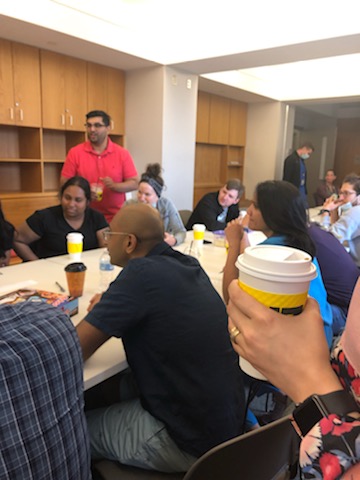- Home
- POMA
- POMA Foundation
- DO Voices
- Residents & Students
- Education
- Advocacy
- Affiliates
- Public
|
Allegheny Health Network IM Residency - Wellness Discussion 2021 AHN IM Residency created wellness discussion groups for all their 110 residents. They meet during their ambulatory block with the chief resident.
Results/Outcome Survey Residents were asked to talk with their chiefs, each other and faculty about what they learned about themselves after going through the pandemic as a trainee. What were their struggles and how did they cope? What did they learn? In what ways did they grow? What did they learn about themselves, their colleagues, and their program? Was there anything they still are coping with? After hearing some of the responses and how genuine and insightful they were at the first session, the chiefs asked the residents to write their experiences down and these were placed on leaves (green for areas of growth, and brown for things they want to “leave behind” or troubling experiences). Two of our residents are artists and painted a tree to place these leaves on which now hangs on the wall in our department of medicine to commemorate the difficult year and all that we gained and lost. The funds from POMA allowed for the residents to leave the hospital to go to a local coffee shop to get coffee for this experience. When the weather permitted, residents went to a local park to have their discussions and then were permitted to have a “field day” for the remainder of the morning. Faculty donated a “COVID piñata” which was also integrated into the wellness morning. This was one of the first social and live events of the year and was greatly appreciated by the residents.
4. What suggestions do you have to increase the probability of success for the project/program for other institutions?I would highly recommend implementing this project or a variation of the project at other institutions. I would recommend doing it at a place outside of the hospital if possible (outside is great). Allowing people to open up at their own pace is important. We learned that sending the response questions out in an email format prior to the activity allowed residents to think more about their answers so that they did not feel pressured or “put on the spot.” Training the chief residents prior with a book like crucial conversations may be helpful. 5. What do you intend to do, upon returning to work, that you learned and practiced during the activity, that will improve your response to stressful situations?
|







